What Is Social Media Engagement? (Strategy and Examples)
Social media engagement is one of the most popular metrics that marketers use to measure the success of their social media marketing strategy.
There are plenty of tactics and hacks to improve social media engagement, though the key to long-term success is implementing a proven, repeatable strategy.
In this post, we’ll explain what social media engagement is, the key benefits of increasing social media engagement, and outline a strategy that effectively increases key social media engagement metrics.
What Is Social Media Engagement?
Social media engagement is audience interaction with your social media posts. Some examples of social media engagement include comments, likes, shares, and link clicks.
Social media engagement metrics are core signals that marketers use to benchmark the success of their social media marketing strategies.
What Are the Benefits of Social Media Engagement?
The ultimate goal of most marketing efforts is to increase sales, but increasing social media engagement has a handful of other significant benefits as well.
Increase Brand Awareness
Social media algorithms interpret engagement as a positive sign that users enjoy that content, so they tend to give that content more organic reach. As a result, your brand receives more total reach, which translates to a boost in brand awareness.
Create Real Relationships with Current Customers
Most companies struggle to get customers to submit feedback surveys, even with monetary incentives. However, companies with a highly engaged social audience can get free, high-quality feedback by simply posting a question on social media.
This gives you a competitive advantage because you can always check in with your audience to ensure there’s demand for any products/features you’re launching and adjust your marketing messaging according to how they define problems.
Increase Trust with Potential Customers
When prospects are researching a company, one of the first places they check is its social media profiles.
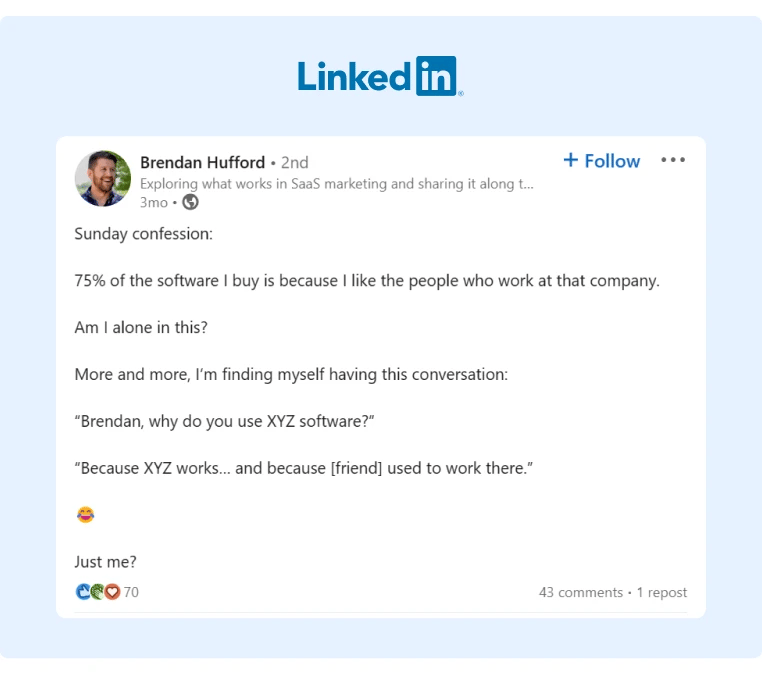 Source: Brendan Hufford
Source: Brendan Hufford
If they see hundreds of people engaging with your content, it’s a positive signal that your company is credible and trustworthy. In addition, if you’re consistently posting about company culture, the team, and successes, it gives your brand more personality, which can further increase trust.
Establish Your Brand as an Industry Leader
Finally, the broader industry is more likely to view a company as a thought leader if it has a large, highly engaged audience.
This leads to several other benefits, including more organic brand mentions from other industry influencers, attracting top talent, and more opportunities to participate and speak at industry events.
Social Media Engagement Strategy
If you’re posting content consistently, but it isn’t generating the engagement you want, use the strategy outlined below to ensure you have the foundation for a strong social media engagement strategy.
Increase Engagement Quality
It's important to remember that there are real people behind each engagement action, and while some might be excellent potential customers, others might not be a good fit for your products/services.
So, even though each like or comment looks the same in an analytics dashboard, they aren't all equally valuable to your business.
For example, if you're selling enterprise B2B software to CFOs, a like from a CFO is much more meaningful than a like from a college student.
To ensure you generate quality engagement, carefully select your engagement strategies and social media channels.
For example, giveaway contests are popular social media engagement strategies that can increase engagement quantity, but engagement quality tends to drop.
Similarly, a social media channel like TikTok will probably generate a high volume of engagement, but the engagement quality tends to be lower than a platform like LinkedIn.
To gauge engagement quality, read through the comments on each post and look through your DMs. If you notice that comments and messages are irrelevant to the pain points your business solves, that might be a sign that it's time to adjust your social media strategy.
Leverage Employee Advocacy
Once you have initial traction, increasing engagement is easy as the social media algorithms will organically give the content more reach and impressions.
However, getting initial traction is tricky.
One of the easiest ways to gain traction is to ask your employees to share it with their networks. You can also ask employees to create their own social media posts promoting brand initiatives.
This strategy is called employee advocacy, and here's a simple illustration of how it can multiply engagement:
To give you an example of employee advocacy in action, consider this post created by Archer.
You'll see that many of the employees jumped into the comments to engage, which further increased its reach:
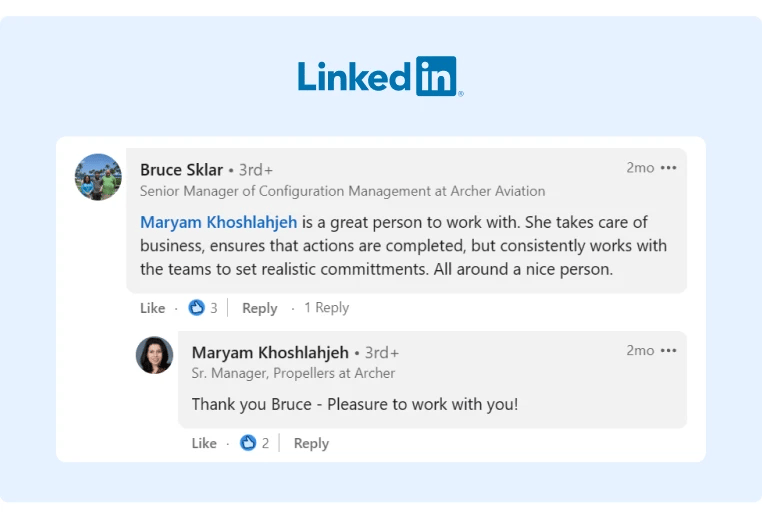
Source: Archer
Here’s a different form of employee advocacy where an Archer employee created their own content promoting the brand.
Then, other Archer employees jumped into the comments to further boost its engagement:
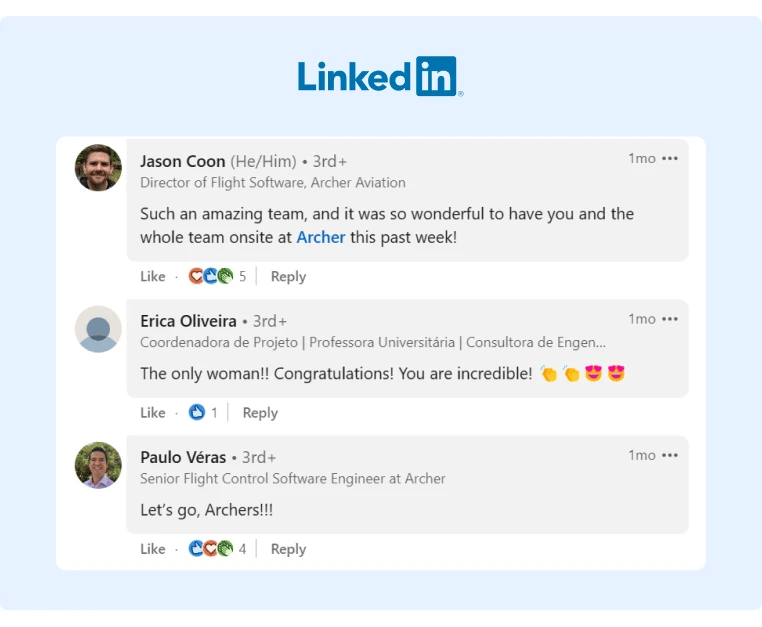
Source: Camille Carvalho
Even though this post wasn’t published on the company page, it still helps spread brand awareness for Archer.
Authentically Engage with Your Audience
One of the most overlooked methods to increase social media engagement rate is to simply respond to your audience's comments.
This helps you build real relationships with your audience, and the audience is more likely to continue engaging with your social media posts if they always receive a thoughtful response to their comment.
As an added bonus, responding to comments is an easy way to double your social media engagement, which the algorithms will view as a positive signal.
Andy Crestodina is an excellent example of an influencer that consistently engages with his audience authentically. Here's just one example of how he takes time to write thoughtful responses to his followers' comments:
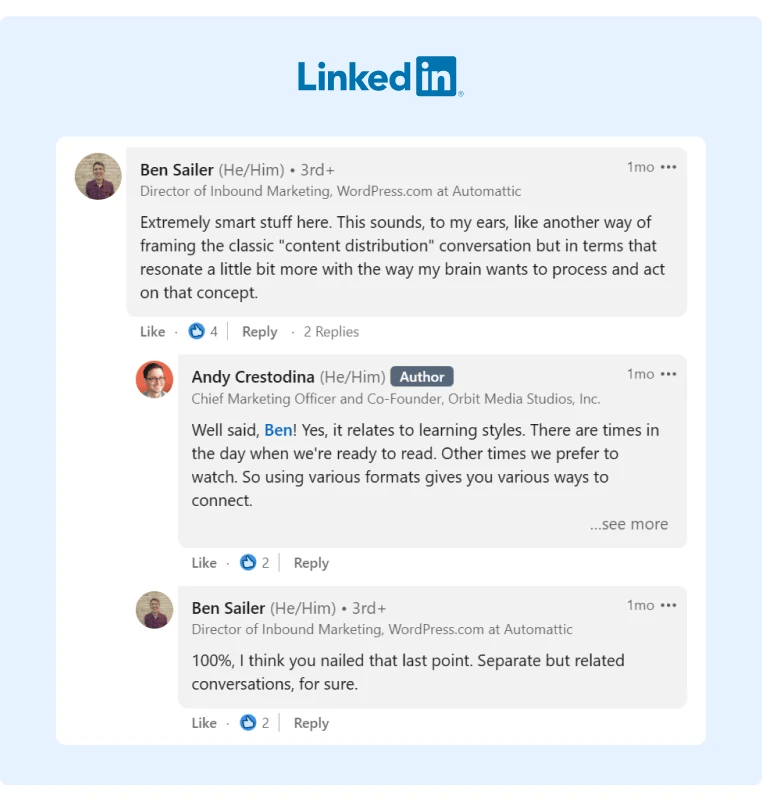
Source: Andy Crestodina
Optimize Your Strategy for Maximum Engagement
There are plenty of minor optimizations you can make to your social media engagement strategy to maximize social media engagement, including:
- Post at the Right Time: This is important because posts that generate high engagement within the first hour of publication tend to earn more organic reach. So look at where your target audience lives and post during their daytime. From there, you can A/B test posting on different days of the week.
- Incorporate Appropriate Hashtags: Hashtags can give your post more reach, so consider using a hashtag tracking tool to find the most active and relevant hashtags to add to your post.
- Optimize Your Hook: In addition to getting people to stop and read your content, a good hook that gets people to click "read more" is a positive engagement signal to social media algorithms. So, look at the hooks for the social media posts that make you pause, and test different approaches and styles.
- Leverage Each Social Platform's Engagement Tools: Most social media platforms have specific features you can leverage to increase engagement. For example, Instagram allows you to add stickers, like polls, questions, and quizzes, to your posts.
- Provide a Comment Prompt: If your main goal is to increase audience engagement, ask a specific question in your social media post. For example, you can ask for their opinion on your claim, or if they have any advice on a specific topic.

- Analyze Your Analytics: One of the best ways to boost engagement is to look at what's already working and double down on those strategies.
Ask For Feedback on Your Content
Even if you follow the engagement steps above, you won't achieve sustainable growth if people don't find your content valuable.
Unfortunately, most creators believe their content is valuable, though their audience doesn't agree.
Instead of guessing and hoping your audience likes your social media content, simply ask them for direct feedback.
You can either ask for feedback directly in your content (i.e., “Leave a comment and let me know if you like this kind of content”), or create a post like this tweet asking your followers what other content they want:
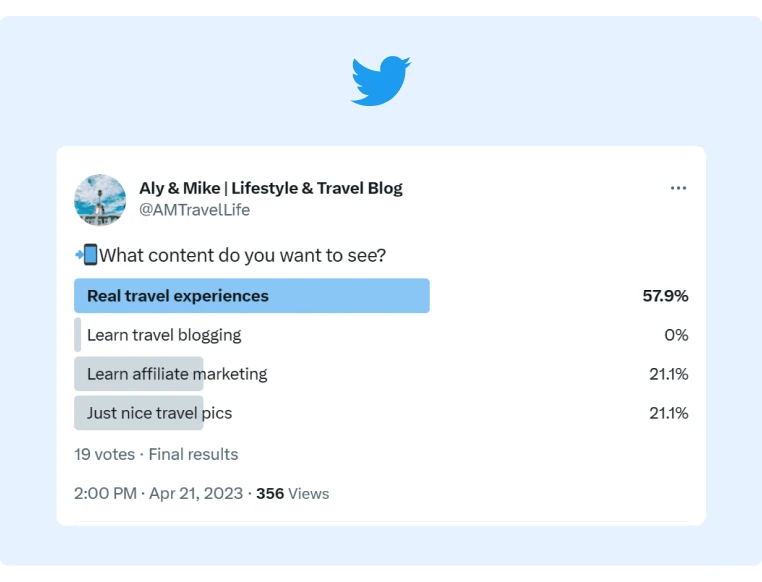
Source: Aly & Mike
Examples of Excellent Social Media Engagement Campaigns
Here are a few campaign formats that tend to generate high engagement that you can incorporate into your social media strategy.
Employee Advocacy
We mentioned above that employee advocacy is one of the best strategies to increase social media engagement with minimal additional cost to your brand, as it only requires you to ask employees to promote brand initiatives on their social media accounts.
Employees can promote brand initiatives by either creating their own content around brand initiatives or engaging with content published by the company or co-workers.
This LinkedIn post is an excellent example of employee advocacy. The company's goal was to promote its recent accomplishment, making Fortune's “100 Best Companies to Work For” list. But instead of just bragging about it on the brand page, employees also stepped up and shared it with their social networks.
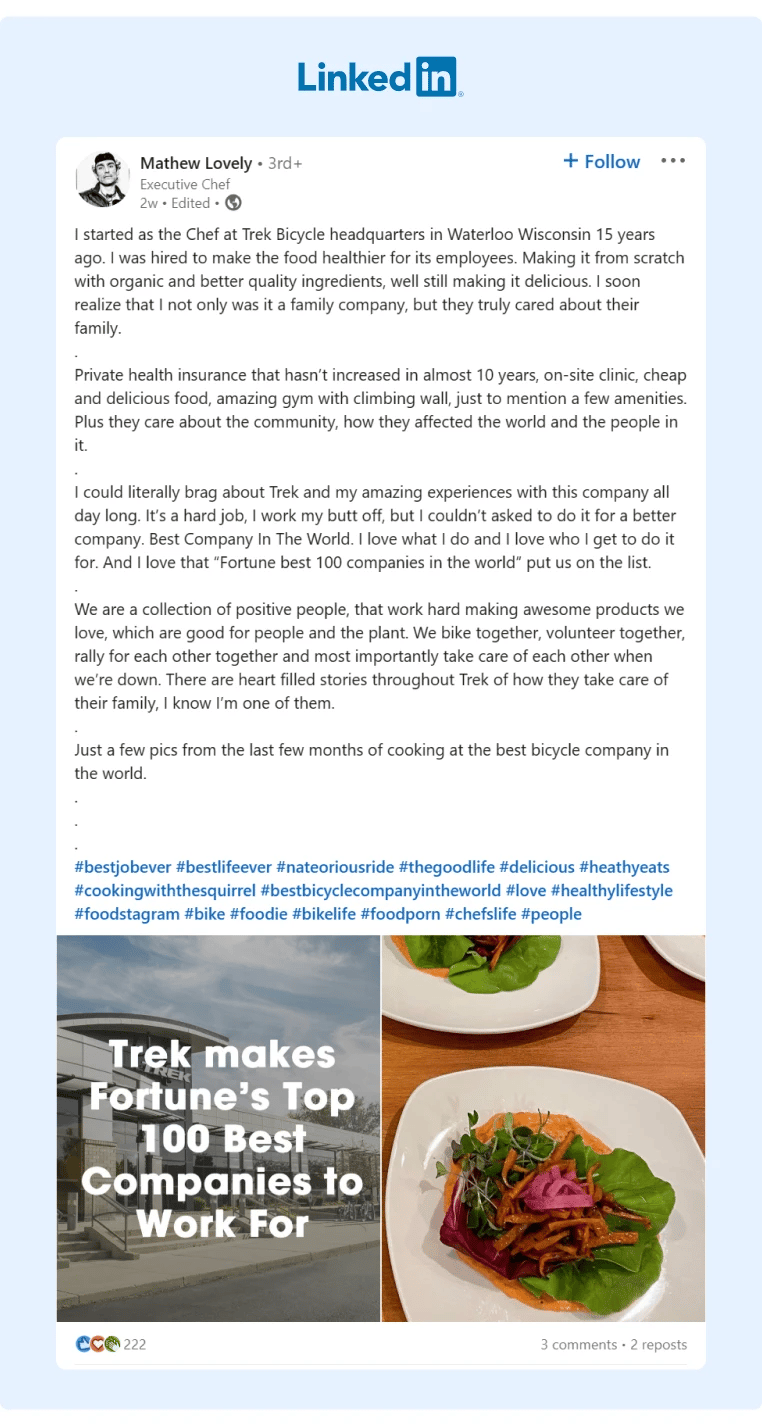
Source: Mathew Lovely
This helps you spread important brand messages more authentically than promoting them on the company's LinkedIn page, and the message will reach a wider audience beyond the company's followers.
If you want to implement an employee advocacy strategy, consider using a tool like GaggleAMP to make it easy to assign engagement activities and track your strategy's success.
Giveaways
Giveaways can help you generate a lot of social media engagement, as your audience has a real incentive to engage. The downside is that the engagement quality tends to be relatively low.
To avoid wasting money on low-quality engagement, offer an incentive that is only valuable to an audience with the pain point that your product or service solves.
For example, if the giveaway reward is a $20 Amazon gift card, any of the millions of people that use Amazon are incentivized to engage. This means you'll probably gain a lot of irrelevant followers, which can harm future engagement rates, and you won't see a great ROI on your social media efforts.
In contrast, here's an excellent example of a giveaway where a medspa offers several free services.
This giveaway not only helped the medspa increase social media engagement and brand awareness, but it also helped them get new people in the door where they later had the opportunity to upsell them.
Influencer Collaborations
Another great way to immediately boost your social media engagement is to collaborate with influencers that already have your ideal target audience.
This is a great strategy for smaller brands with a small following who want an easy way to kickstart their social media engagement.
You can use a social listening tool to discover influencers in your industry or an influencer marketing platform, like Upfluence, which provides a list of influencers you can filter by category and audience demographic.
The key to making your influencer marketing campaigns successful is to ensure that you pick an influencer with a highly engaged, relevant audience. In general, micro-influencers tend to generate a higher ROI than major celebrities because they typically have a much more targeted and trusting audience.
Here's a great example of how BruMate, a drinkware brand, collaborated with a photographer micro-influencer with great success:
While most traditional influencer marketing platforms are designed for e-commerce brands, B2B brands can leverage influencers by doing content collaborations (like a joint podcast episode) or cross-promoting products/services.
Here's an example of this in action:
I've spent the last few weeks interviewing some of the top creators in the world for our online event
— Ankur Nagpal (@ankurnagpal) April 8, 2023
They all have unique backgrounds, audiences on different platforms & a variety of business models
But despite the differences, lots of common themes still emerge: pic.twitter.com/ph57sVOv9S
Offer a Lead Magnet
Similar to a giveaway, offering an asset that will provide significant value to your audience for free is an easy way to increase engagement.
Here’s an excellent example of a B2B lead magnet that generated hundreds of retweets.
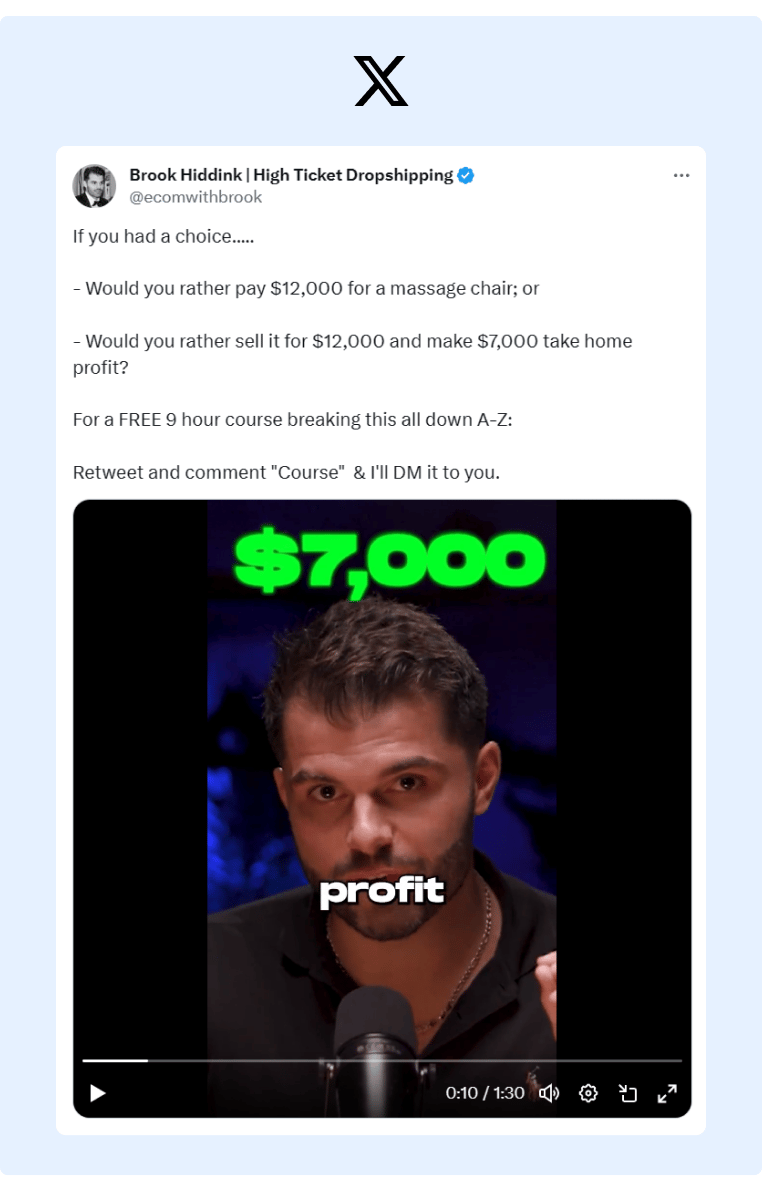
The best part is that each person engaging with the post clearly runs Google Ads (otherwise, the lead magnet would be irrelevant), so all of the engagement is clearly from his target audience.
Polls and Quizzes
It's a lot easier to get someone to like a post then comment on a post because a like requires much less effort than a comment.
So, the easier you can make it for people to engage with your content, the more likely they are to engage.
For this reason, polls and quizzes are excellent tools to generate more engagement as it only requires the audience to click a button.
Polls are particularly effective engagement tools because they can spark controversial conversations that can then generate even more engagement.
This post is a great example of how a poll can ignite engagement.
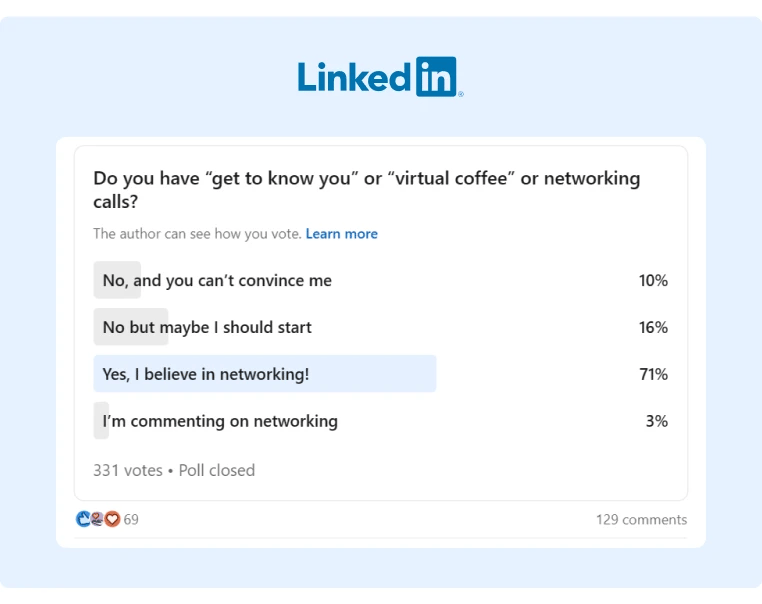
Source: Deanna Russo
The poll itself generated 320 votes as of this writing, but it also sparked a lot of interesting comments. So, an additional takeaway is to add a controversial edge to your post or take a contrarian view.
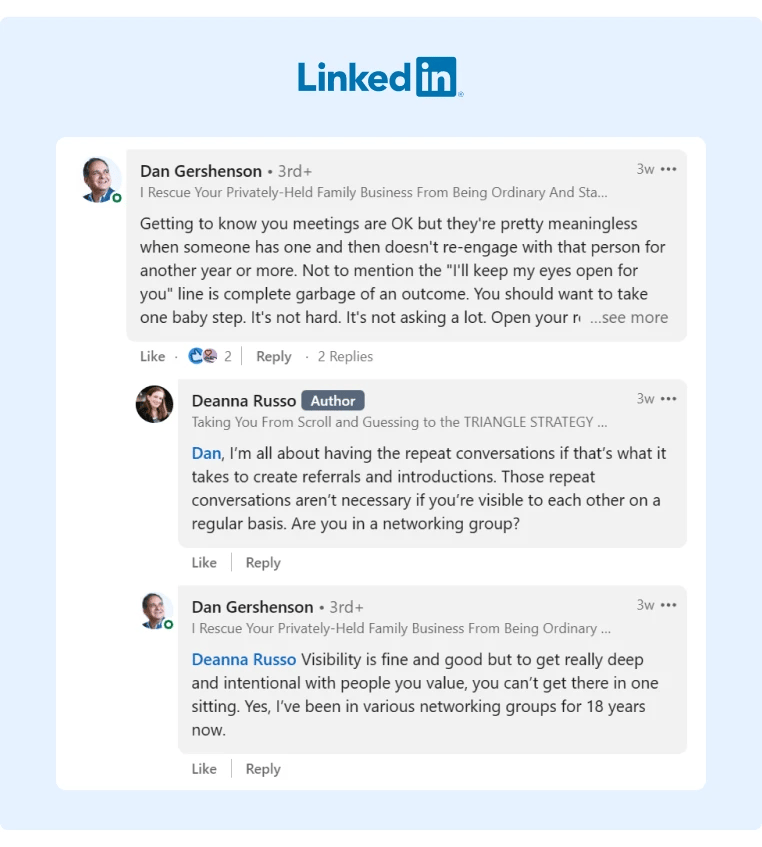
Source: Deanna Russo
Memes and Gifs
Memes and gifs generate a lot of engagement because they are visual, relatable, and tend to be humorous.
Semrush posts plenty of memes on social media that continuously receive high engagement:
While engagement on memes and GIFs might not be as high quality as other social media posts (like lead magnets or influencer collaboration), they're still excellent to sprinkle into your content strategy and boost engagement, especially if you have a humorous brand voice.
In general, social media platforms give more reach to brands that consistently generate high engagement, so these memes can help boost your average engagement rate. In addition, most of these memes would only resonate with marketers, so they'll still attract engagement from the right general audience.
As an added bonus, a great meme is memorable, and most people love sharing funny memes with their friends, so memes are a great way to increase brand awareness.
Implementing a Successful Social Media Engagement Strategy
There are plenty of hacks to increase social media engagement, but if you want to create sustainable growth, implementing a proven strategy is key.
This is why we built GaggleAMP.
We found that employee advocacy was among the most effective strategies to increase social media engagement quantity and quality, but getting employees to consistently engage was challenging as they often didn't know how to engage or what content they should share.
GaggleAMP solves these problems by allowing social media managers to create and assign personalized engagement activities to employees at scale.
To see for yourself how GaggleAMP works, you can schedule a demo today.

